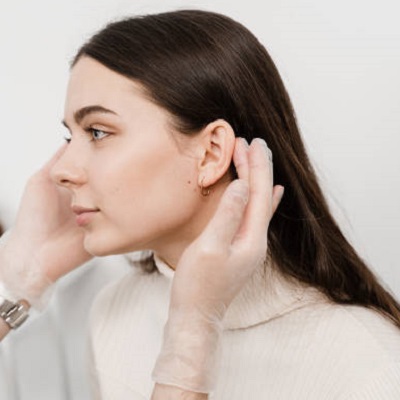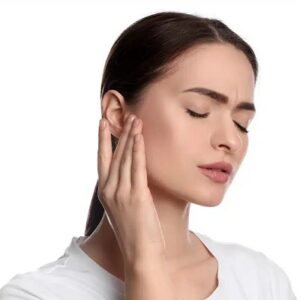
Popular cosmetic surgery aiming at enhancing ear look is ear reshaping, sometimes called otoplasty. Many view this operation as correcting problems such as malformations, ear asymmetry, or protruding ears. Still, one of the most often-asked questions possible for candidates is, “Does Ear Reshaping Hurt?” We will discuss the facets of ear reshaping surgery in this extensive blog, including the operation, degree of pain, the healing process, and advice on reducing discomfort.
What is Ear Reshaping?
Ear reshaping is a surgical modification of the ear’s location, size, or form. It can be done for aesthetic purposes or to fix congenital defects or traumas. Usually carried out by a licensed plastic surgeon, the operation is advisable for adults and children.
The Technique:
One should know what the operation involves before entering the pain levels connected with ear reshaping. Here is a detailed walk-through:
Consultation: The first step in the process is a consultation with a plastic surgeon. During this meeting, the surgeon will evaluate your ears, review your objectives, and discuss the operation intensely.
- Anaesthesia: Sureon usually uses local anaesthesia with sedation or general anaesthesia to guarantee your comfort and pain-free state during the operation on the day of it.
- Incisions: The surgeon will access the cartilage by making small incisions behind the ears.
- Reshaping: To achieve the intended look, the cartilage is altered, removed, or relocated. Threads hold the fresh shape in place.
- Closing Incisions: Sutures close the incisions, and bandages support ear healing.
Does Reshaping Ears Hurt?
Let us now focus on the main issue: Does Ear Reshaping Hurt? Individual differences abound in the degree of pain felt during and following ear reshaping surgery.
The following lists your expected outcomes:
- During the Surgery: Anesthesia will help you avoid experiencing any discomfort during the actual surgery. A local anaesthetic numbs the area; sedation or general anaesthesia guarantees your state of relaxation or sleep.
- Soon After Surgery: You can feel discomfort and pain as the anaesthesia wears off. The healing process has usual parts, including this. To help control this early discomfort, the surgeon will write prescriptions for painkillers.
- First Day of the Surgery: The first few days following surgery could cause you some throbbing or pain around the ears. Prescription medicines typically help to control this discomfort, though, and it usually fades with the days.
- Weeks After Surgery: The pain and discomfort will decrease as the ears recover. After the first week, most patients say their discomfort has improved. Following the surgeon’s aftercare advice will help guarantee a better and more comfortable recovery.
Rehabilitation Methodology:
Determining the total pain and discomfort following ear reshaping surgery depends much on the recovery process. Here are some salient features to bear in mind:
- Rest and Relaxation: Rest is vital for the first several days following surgery, and you should avoid demanding activities. Maintaining head elevation can also help lower discomfort and swelling.
- Medication: Follow your surgeon’s directions on the prescribed painkillers. Over-the-counter painkillers could also be advised for mild pain.
- Dressings and Bandages: As your surgeon directs, apply dressings and bandages.
- Follow-Up Appointments: See your surgeon for all planned follow-up appointments. These appointments allow the surgeon to address any issues you might have and track your healing development.
- Avoiding Pressure: Avoid undue pressure on your ears, mainly when you sleep. To prevent discomfort and help with healing, you might have to spend a few weeks sleeping on your back.
Tips for Minimizing Discomfort:
Although any operation causes some difficulty, there are numerous things you can do to help reduce pain and guarantee a better recovery:
- Knowing the operation and what to expect will enable you to prepare physically and psychologically for the surgery and recuperation period.
- Honour your surgeon’s post-operative care recommendations strictly. Good treatment can significantly ease suffering and hasten recovery.
- Maintaining a good diet and drinking enough will help your body recover naturally.
- Cold compresses can assist in numbing the area and lowering swelling, offering pain relief.
- Steer clear of alcohol and cigarettes since both might hinder healing. Avoid them in the weeks before and following your surgery.
Final Thoughts:
If ear reshaping surgery causes discomfort, it is controllable and improves in a few days following surgery. Anesthesia guarantees that the operation itself is pain-free; recommended drugs help control any post-operative discomfort. Following the surgeon’s aftercare advice and acting proactively to assist in your recovery will help reduce pain and enable the advantages of a good ear reshaping operation.
If you are considering ear reshaping, see a trained plastic surgeon at Dynamic Clinic PK to discuss your issues and learn more about what to expect.












